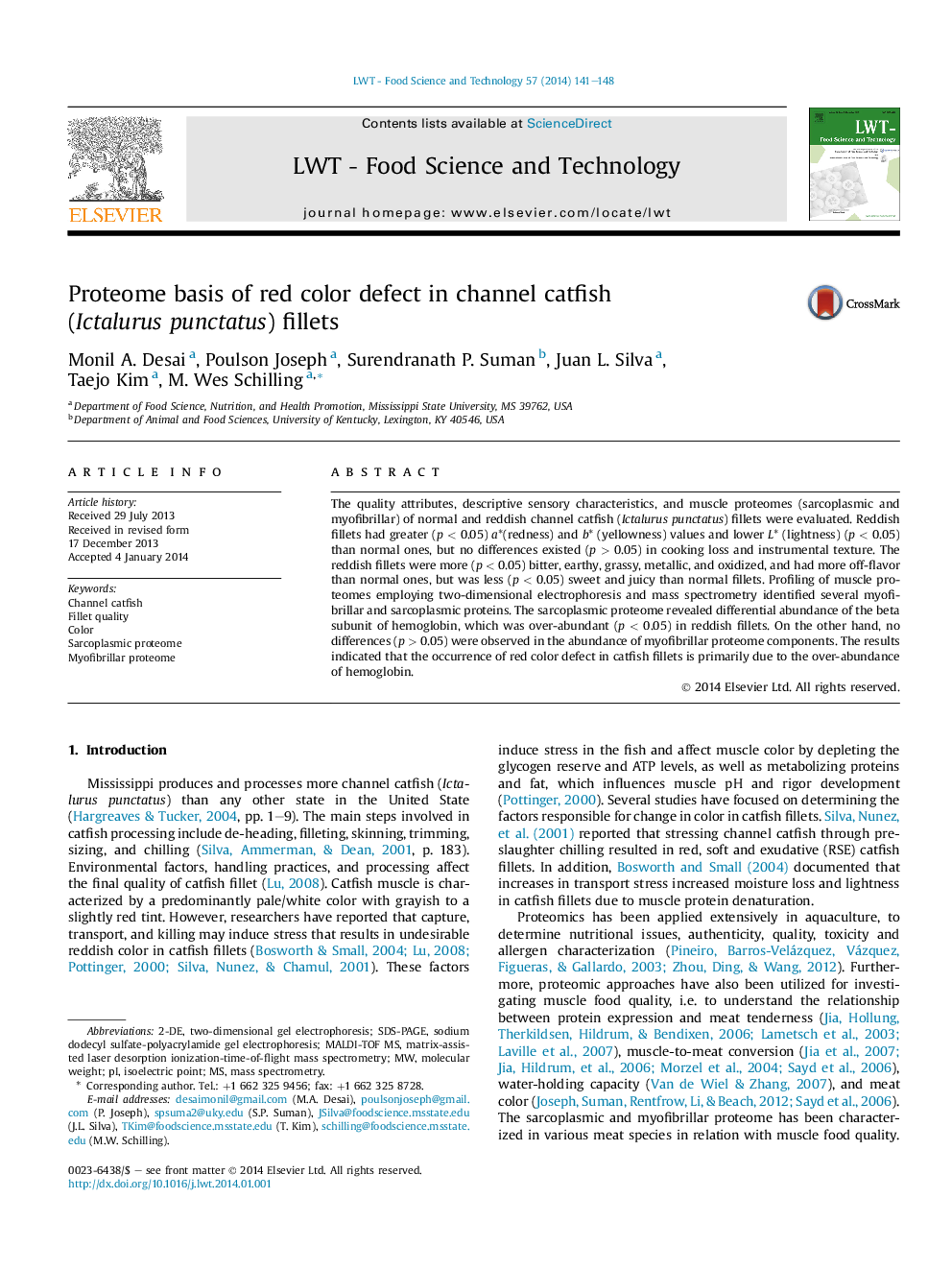| Article ID | Journal | Published Year | Pages | File Type |
|---|---|---|---|---|
| 6403749 | LWT - Food Science and Technology | 2014 | 8 Pages |
â¢Sensory differences between normal and reddish catfish fillets were characterized.â¢After cooking, the reddish fillets were more oxidized than normal fillets.â¢The proteome were characterized for reddish catfish fillets.â¢Hemoglobin is responsible for the red color defect in catfish fillets.
The quality attributes, descriptive sensory characteristics, and muscle proteomes (sarcoplasmic and myofibrillar) of normal and reddish channel catfish (Ictalurus punctatus) fillets were evaluated. Reddish fillets had greater (p < 0.05) a*(redness) and b* (yellowness) values and lower L* (lightness) (p < 0.05) than normal ones, but no differences existed (p > 0.05) in cooking loss and instrumental texture. The reddish fillets were more (p < 0.05) bitter, earthy, grassy, metallic, and oxidized, and had more off-flavor than normal ones, but was less (p < 0.05) sweet and juicy than normal fillets. Profiling of muscle proteomes employing two-dimensional electrophoresis and mass spectrometry identified several myofibrillar and sarcoplasmic proteins. The sarcoplasmic proteome revealed differential abundance of the beta subunit of hemoglobin, which was over-abundant (p < 0.05) in reddish fillets. On the other hand, no differences (p > 0.05) were observed in the abundance of myofibrillar proteome components. The results indicated that the occurrence of red color defect in catfish fillets is primarily due to the over-abundance of hemoglobin.
